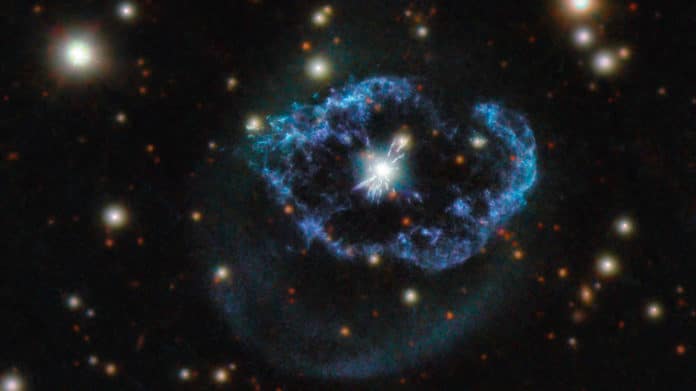Resides in the constellation of Cygnus, Abell 78 is a planetary nebula with bright central zones and a faint extended outer halo. Its outer halo is composed mainly of Hydrogen. The bright inner elliptical ring is composed mainly of Helium.
Recently, astronomers captured breathtaking images of Abell 78, aka ACO 78, PK 081-14.1, and ARO 174, using NASA/ESA Hubble Space Telescope and the 1.8-m Pan-STARRS1 telescope. Located almost 5,000 light-years away, this planetary nebula is 2.8 light-years across.
After the nuclear fuel runs out in their core, there are stars with a mass of about 0.8 to eight times the sun’s mass to form dense and warm white dwarf stars. During this process, the dying star will throw off its outer layers of material, forming an elaborate cloud of gas and dust known as a planetary nebula.
Planetary nebulae often gather astrophotographers’ attention because of their beauty and complex shapes. However, a few like Abell 78 are the result of a so-called “born again” star.
Although the star’s core has stopped burning Hydrogen and Helium, a thermonuclear runaway on its surface ejects the material at high speed. This ejecta shocks and sweeps up the old nebula’s material, producing the filaments and irregular shell around the central star seen in this image, which features data from Hubble’s Wide Field Camera 3 and the Panoramic Survey Telescope and Rapid Response System.
